Are you just beginning your gardening journey? Perhaps you’ve made a start but had mixed results? From a window box to a large garden patch, and everything in between – let’s look at some gardening basics to keep in mind. Gardening can be lots of fun and provide a huge sense of satisfaction. Here are 10 garden tips for beginners, to help ensure success!
1) Have a Plan
When it comes to creating a garden and growing plants, there are literally endless choices to be made. From layout to planting, and from features to furniture. It can be overwhelming trying to decide what will go where.
As result, it’s easy to chop and change, drifting from one idea to the next. Your outdoor space can become a jumble of random planting, mismatched décor and illogical pathways, spurred on by fleeting media trends and impulse buys at the garden centre!
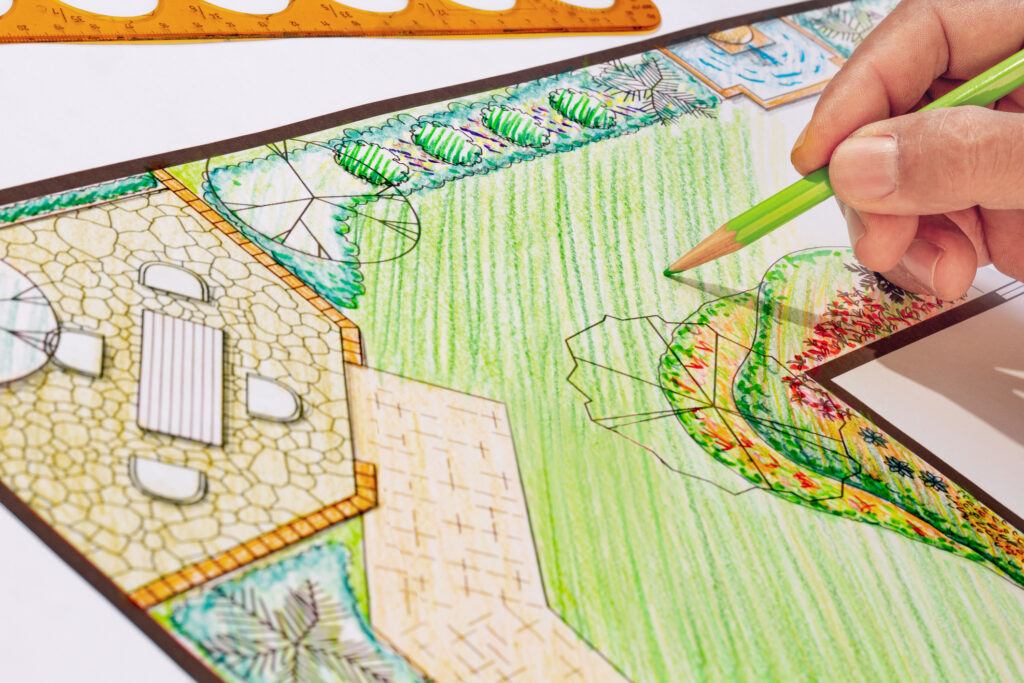
If you’re creating or improving the layout in an outdoor area, then having a plan helps to define the space and provide direction. It doesn’t need to be complicated but should include the basics such as what plants you want, the size of beds and borders, pathways, patios and furniture.
Consider what’s important to you and how you’ll use your garden. For example, you might consider the following to include…
- Flower beds
- Vegetable patch
- Raised beds
- A Dining area
- Seating areas
- Space for children play
- A patio or decking area
- A pond or water feature
- A lawn area
- Pathways
- A shed
- A Greenhouse
- A summer house
Even if you’re simply tending to a few pots on your balcony garden, it’s worth thinking about which plants you’d like to try and read up on what will work for your location (more on that later) and when in the year to do different tasks.
Your plans might change as you go along – which is fine – but at least you’ll start off with a clearer idea about what you want to achieve and how you’re going to get there.
2) Start Small
When starting it can be tempting to go big with ambitious landscaping projects and planting schemes. You might feel like you want to create the finished vision that’s in your head, and as soon as possible.
Not only does this approach get expensive, but this approach can be time-consuming and difficult to maintain, especially if you’re a beginner!
Instead, start small and build up gradually. Pick a few simple projects that you can master over the first year or two – e.g. creating flower beds or a vegetable patch – then move on to something more complicated as your experience and confidence grow.
If you want to do more ambitious landscaping, such as erecting fences or walls or building patios or decking, then it may be best to enlist the help of a professional. That way you can be sure that everything is done safely and correctly.
You’ll want to avoid having a garden space full of half-planted beds and unfinished DIY projects laying everywhere. This can be demotivating and spoil your enthusiasm.
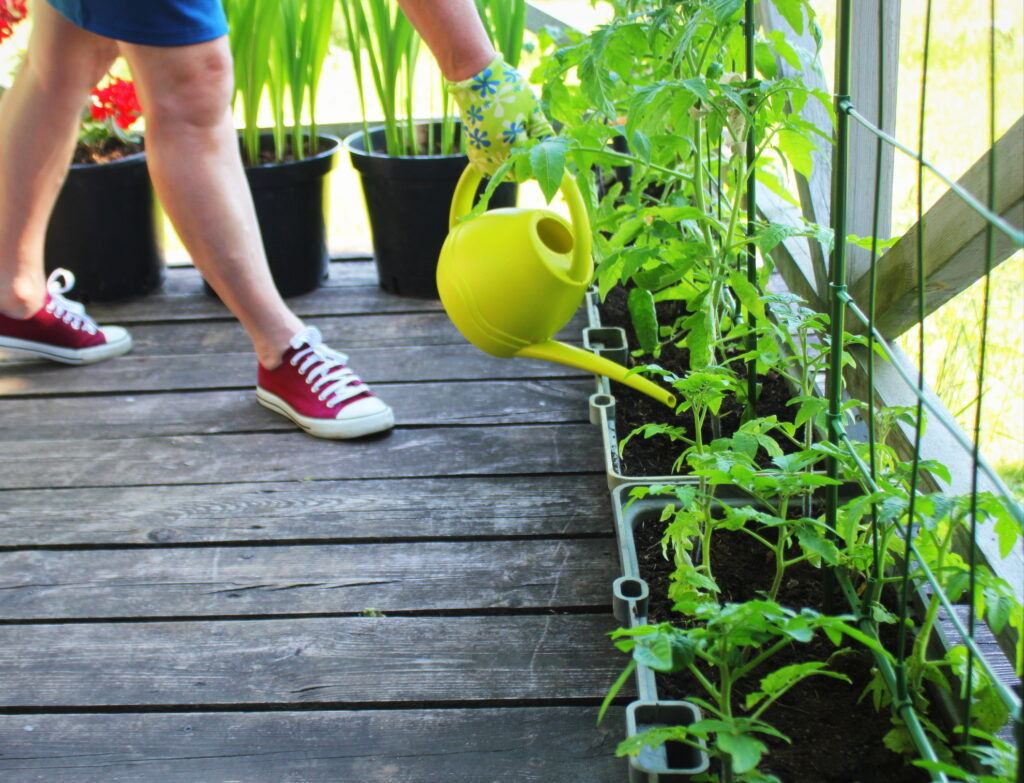
In terms of growing plants, start with just a few varieties that are easy to maintain. This will help you learn about what works for your garden and get used to the different tasks such as watering, weeding, pruning and fertilising.
Growing some plants from seeds is a brilliant, cheap way to get into gardening and start learning about how to care for plants. However, it can quickly get overwhelming, once the growing season gets into full swing and there’s feeding, transplanting, watering, feeding and other maintenance to do.
Better to grow a handful of reliable varieties well, than end up with a graveyard of pots and seed trays that didn’t quite materialise into anything.
3) Get to Know Your Space
Before you do anything, it’s important to get to know your space. At the very basic level, this means the soil type, drainage levels and sun exposure.
Before making any big decisions about the layout of your garden, always spend some time watching how it changes through the day – and possibly through the year.
Where are the sunny spots and where is the shade?
Does it get particularly breezy or is it quite well-sheltered?
Where is it secluded and where are the exposed areas?

Take some time to just sit in different spots and see what you notice. There might notice viewpoints or features that are already appealing and, on the other hand, things that you’d rather hide away from view.
While the soil in your garden can be improved, it’s really useful to understand what kind of soil you already have in your garden. Is it heavy clay or a light sandy soil? What could you do to improve it?
Knowing about the conditions and environment in your garden will always help you make good decisions about planting and how best to use the space to its full potential.
4) Choose the Right Plants (Don’t Guess!)
As we’ve just covered in the last tip, knowing about the conditions in your garden can be a game changer when it comes to choosing plants.
At the very least, you should always try to buy or grow pants with a rough idea about whereabouts they’re going to live.
There’s no point in buying something that needs full sunlight all day for a shady balcony garden. On the other hand, you don’t want shade-loving plants to get scorched by the sun in your south-facing border.
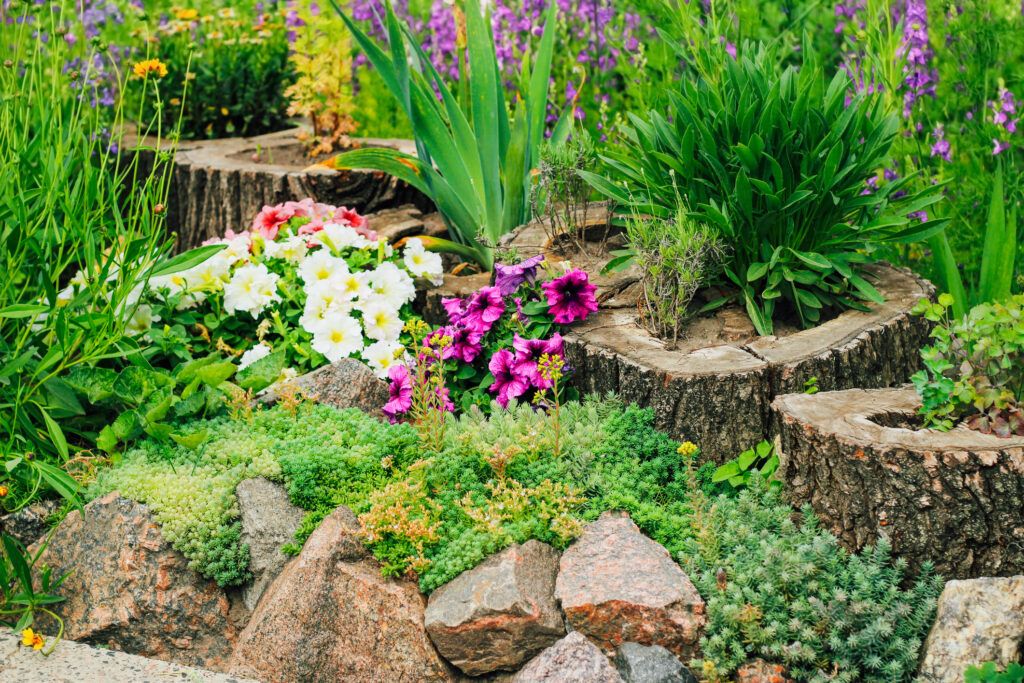
As simple as it sounds, you can save a lot of hard work and disappointment by researching plant varieties online to see what might work in different spaces. The RHS plant finder tool is a very good place to start.
Always read the labels before buying plants when you’re out and about. Just because it looks great when you buy it, think about where it will go and whether it’s a good match.
If you’d like to be even more efficient, you could create a wish list of suitable varieties somewhere handy and then periodically order plants and seeds directly from a supplier.
While soil types and locations can potentially be changed and improved, the one thing you can’t change is the weather. It’s important to know your hardiness zone and choose plants accordingly, so you’ll know they can withstand the coldest times of the year where you live.
As a general rule, it’s always wise to go for native plants, which means those varieties which have established themselves naturally in the country where you live, rather than more exotic varieties that have been introduced from overseas.
5) Water, Feed & Prune
No matter what kind of garden project you have, your plants will require regular watering and feeding to grow strong.
Watering is a very important part of gardening as it helps to keep the soil moist, which improves root growth and encourages disease-resistant plants. As you get more experienced, you’ll learn when and how much water different varieties need.
Fertilizing your garden regularly can also help promote healthy growth and yield bigger crops from vegetables or flowers. You should always read the packet instructions before applying any fertilizer or compost and make sure to use whatever type is best suited for the plants in question – there are all sorts of organic fertilizers available on the market these days, so try experimenting with some.
Prune away dead and diseased branches to maintain healthy growth and prevent spread of disease. Pruning can also be used to shape the plants, providing you with a more attractive garden. When pruning trees, always make sure that you leave enough foliage on them so they don’t become weakened by the sunlight streaming through.
Lastly, keep your tools clean and sharp to avoid damaging delicate stems or spreading disease between plants. Regularly spray and sharpen your tools – this will help keep them in good condition for years to come.
6) Know Your Soil (And Improve It)
Getting to know your soil type is a great way to help you choose the right plants for your garden. Knowing about pH levels and drainage can be extremely useful in helping you decide what will work best in each area of your garden.
Different soils need different treatments, so it’s worth learning about how to improve them. Adding organic matter such as compost or manure can be beneficial – both break down slowly to release nutrients into the soil over time, which helps promote healthy growth.
Covering bare patches with mulch also helps reduce weeds, retain moisture and keep soils cool during hot periods by providing shade. Consider using a mix of different materials such as bark chippings or pebbles for decorative effect too!
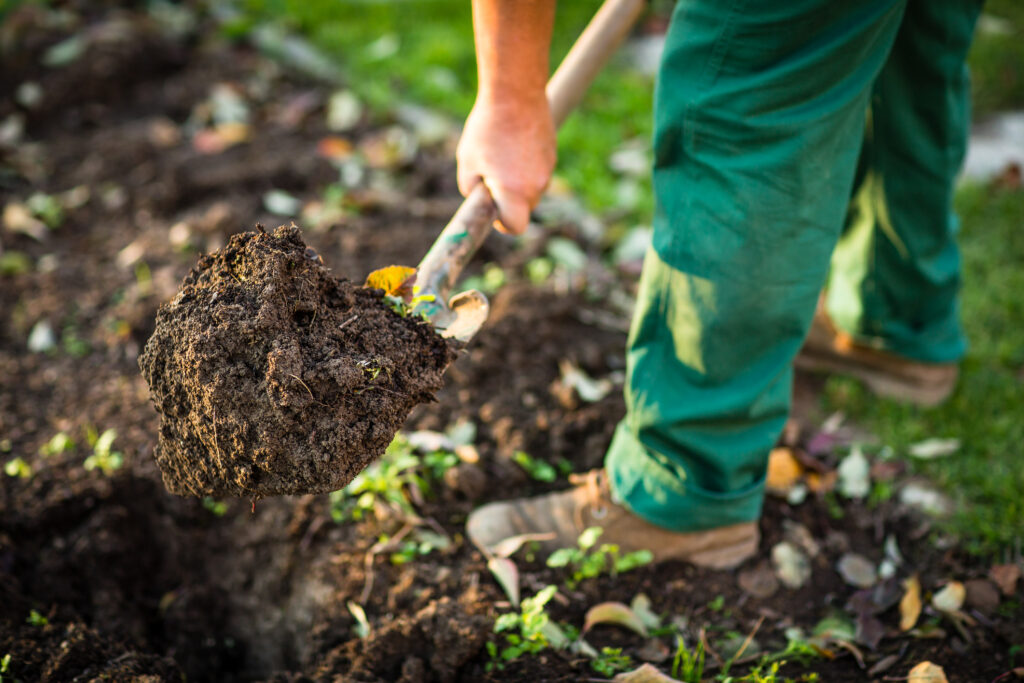
You can buy a wide range of composts from garden centres and even supermarkets, and besides general-purpose compost, there are specialist types to suit different situations. Using the right type can make life much easier. For instance, use seed and cutting compost for seed sowing and potting on young plants, as this contains ingredients that promote germination and healthy root growth.
7) Welcome the Wildlife
Attracting wildlife into your garden is a great way of taking the pressure off your plants. Not only can it keep pests away, but it can also make your garden come alive with different creatures.
Birds and bees are particularly beneficial to gardens, as they help pollinate flowers, disperse seeds and feed on pests that might otherwise damage your plants. So try to provide them with nesting sites, such as bird boxes or bee hives if you have room in your garden.
It can also be incredibly rewarding to watch birds, insects and animals come and goes as they please.
You can encourage wildlife into your garden by planting a variety of hardy plants that will provide food and shelter throughout the year.
Think about adding trees and shrubs, wildflowers, ground covers and evergreen varieties to create pockets of diversity that appeal to insects and birds. You could also add native hedges and trees that produce seeds or berries, which are especially beneficial in winter when food is scarce.
Beyond planting, you could create your own DIY insect house or ‘bug hotel’. This can be a fun and easy project to do with the kids and is great for getting them interested in nature.
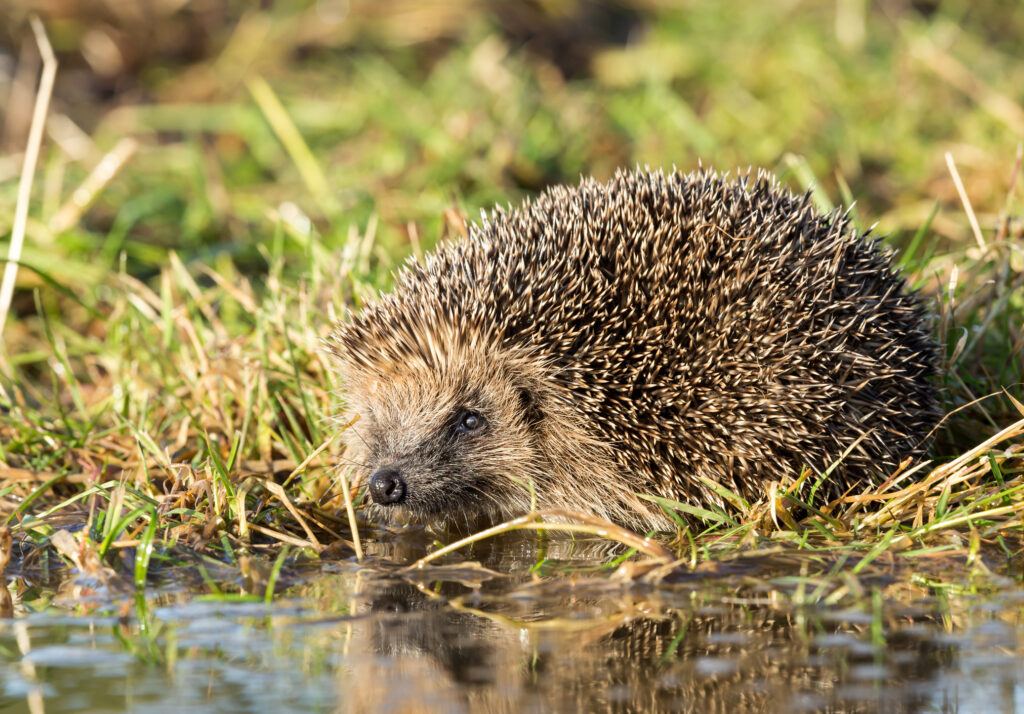
Also, don’t forget to create a small water feature or wildlife pond – this will bring in amphibians, reptiles and other wildlife which all help to keep the natural balance of your garden.
Finally, be sure to leave some areas of your garden unkempt and wild. This will provide food and shelter for insects, birds and small mammals that thrive in natural habitats.
8) Pay Consistent Attention
Gardening can be a labour of love, but it still requires regular care and attention to ensure that your garden is at its best. To make this easier, plan out a schedule that fits your lifestyle, such as dedicating an hour or two each week to maintaining your plants.
Note that this tip says ‘consistent’ and not ‘constant’ attention. Gardening doesn’t have to be a laborious chore. ‘Little and often’ is the key phrase.
It’s been said that good gardening is about observation. That’s why it pays to take a few moments each day to look around your garden and see what needs doing. Consistent attention can also help you spot early warning signs, from wilting leaves to strange discolourations and much more.
When it comes to weeding and pruning, try to do this regularly throughout the growing season before any weeds have a chance to spread. While deadheading spent flowers might seem like a chore, it will help encourage new blooms which means more colour and interest in your garden.
Watering also needs to be done consistently – too much water can cause root rot and blockages, while not enough can cause drought stress and make plants more susceptible to pests and diseases.
Pest and disease control is also important – check your plants regularly for signs of damage, use preventative measures such as encouraging beneficial insects into the garden, and always follow product instructions when using pesticides or fungicides.
Finally, don’t forget to relax in it too! Gardening can be a great way to de-stress after a long day at work (or even during a lunch break), so make sure you take some time out to sit back, relax and enjoy all the hard work you’ve done – it’s worth it.
9) Enjoy the Process as Much as the Results
Gardening can be extremely rewarding, but it’s important to remember that results won’t happen overnight. Be patient and enjoy the process of observing and learning as your garden grows and changes.
You might like to take some photos as you make small changes here and there. It’s great to look back and reflect on the changes you’ve made and learn from what worked well and what was not so successful.
Take the time to appreciate your garden – a newly planted tree that will one day be tall and stately, a miniature wildflower area with its own unique beauty, or simply noticing how the colours of the seasons change.
Gardening is also a great way to connect with nature and discover new things about yourself in the process. You might even find that it has a calming effect on you, helping to reduce stress and increase your sense of well-being.
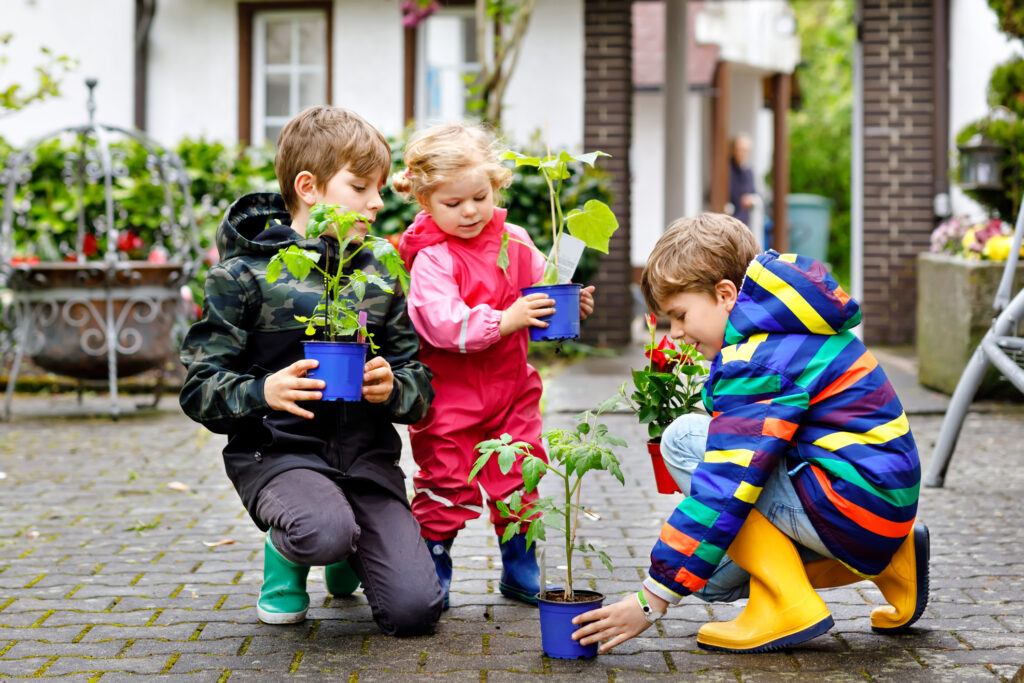
It’s also nice to share with family and friends – going outside together can be a great bonding experience, whether it’s checking out the progress of each plant or simply enjoying the space you’ve created.
Finally, gardening is a fantastic way to get children outdoors and teach them about nature.
10) Work With Nature, Not Against It
Nature works in mysterious ways and can often throw up surprises. Keep an open mind and try to work with nature, not against it.
We’ve talked about putting the right plant in the right place and trying hardy native plants. Keeping to very basic principles like these can make a huge impact on the success of your garden and how much time you need to spend maintaining it.
It’s also important to use natural methods of pest and disease control as much as possible. This means increasing biodiversity in the garden by encouraging wildlife, hand weeding and picking off pests where you can before resorting to chemicals.
Finally, try not to get too bogged down in perfectionism – it’s OK if your garden isn’t perfectly manicured all the time. Nature is unpredictable and that’s part of its beauty – you can always take a lesson from it and use nature’s unique ideas in your garden design.
Final Thoughts
By following these 10 tips for gardening basics, you’ll be well on your way to creating a successful, beautiful garden – in whatever shape and form that means for you.
There’s much enjoyment to be had from tending a garden, regardless of what kind of space you have available. Keep an open mind, never stop learning and unleash your creativity.
And remember, gardening can be a fun and rewarding experience, so don’t forget to take the time to enjoy it. Good luck!
Do you have a top gardening tip to share? Let us know if the comments!
